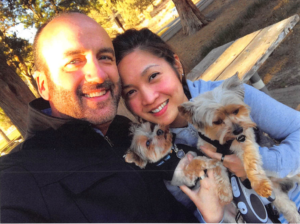Introduction
For many thousands of foreign students studying in the United States, the transition from an F-1 student visa to an H-1B work visa is an important milestone in their Professional career. However, the U.S. immigration process has a gap in visa timelines that can create complications for waiting students hoping to start their H-1B status.
The Cap-Gap Extension can be beneficial in this situation. It provides for eligible F-1 students to remain in the U.S. and work while waiting for or receiving the H-1B petition. Without it, most students would experience a gap in employment and legal status.
This guide will give you in-depth, step-by-step instructions on all you need to know about the Cap-Gap Extension, such as:
- What is the Cap-Gap Extension?
- Who is eligible for the Cap-Gap Extension?
- How to apply and what documents are required?
- Challenges and possible risks during the Cap-Gap time
- Alternatives if your H-1B petition is rejected
By the end of this article to the end, you will know everything you need to know about successfully going through the F-1 to H-1B transition process.
What is the Cap-Gap Extension?
The h1b cap gap extension is a policy that allows F-1 students to remain legally in the U.S. and, in certain cases, to keep working once their F-1 status or OPT (Optional Practical Training) has ended but before when their H-1B status starts on October 1st.
This extension is important because:
- Several F-1 students complete their OPT by October 1st, putting them in a gap period when otherwise they would be required to leave the U.S. or end work.
- The Cap-Gap Extension fills in this gap so that students remain in status and can work without a break if the H-1B petition is submitted on time.
Who is Eligible for the Cap-Gap Extension?

The Cap-Gap Extension is not available to all F-1 students. You need to satisfy all of the following conditions:
1. Your Employer Must File an H-1B Petition Within Time
To be eligible for the Cap-Gap, your employer will have to file an H-1B petition on or before your F-1 status or OPT ends. If they fail to meet the h1b application due date, you won’t be considered.
2. Your H-1B Petition Must Request a Change of Status
Your employer will have to file the H-1B petition as a change of status, rather than consular processing.
- If you depart the U.S. while waiting for H-1B approval, you lose Cap-Gap status and have to apply for an H-1B visa at a U.S. consulate before returning.
3. Your Petition Must Be Filed Under the H-1B Cap
The Cap-Gap Extension applies only to students whose H-1B petition is under the cap.
- If your company is cap-exempt (say, a college or research facility), you won’t be Cap-Gap-eligible because your H-1B can become effective at once.
4. Your F-1 Status or OPT Should Still Be Valid During Filing
Your OPT, F-1 visa, or 60-day grace period must remain valid when your employer files your H-1B petition.
In case your F-1 status expires while your employer does not file the petition, you will not be eligible for Cap-Gap Extension.
How to Apply for the Cap-Gap Extension?

If you are eligible, here are step-by-step instructions on how to apply for the Cap-Gap Extension:
Step 1: Verify Your H-1B Filing with Your Employer
Before applying for the Cap-Gap Extension, ensure that your employer has filed your H-1B petition on time.
Request a copy of the H-1B receipt notice (Form I-797) as proof that USCIS has accepted the petition.
If your employer filed but has not yet received a receipt, they can provide a FedEx or USPS tracking number as temporary proof.
Step 2: Get an Updated Form I-20 from Your DSO
After your H-1B petition is filed, visit your school’s Designated School Official (DSO) and ask for an updated Form I-20 showing the Cap-Gap Extension.
Your DSO will verify your eligibility in SEVIS (Student and Exchange Visitor Information System) and issue you a new I-20 with Cap-Gap notation.
Step 3: Get Your Cap-Gap I-20 and Retain It for Records
When you get your new Cap-Gap I-20, make copies and keep them for future reference.
You don’t have to send this document to USCIS—it is for your records and to present to your employer.
This I-20 is evidence that you are legally permitted to remain in the U.S. and continue employment until September 30th if your H-1B is approved.
Cap-Gap Work Authorization: Automatic vs. Extended
There are two categories of Cap-Gap Extensions:
1. Automatic Cap-Gap Extension
If your H-1B petition has been filed but not yet approved, your work authorization is automatically extended until June 1st.
2. Extended Cap-Gap Work Authorization
If your H-1B is approved, your work authorization extended until September 30th.
Important: If your petition is denied or withdrawn, your Cap-Gap Extension automatically ends and you have to stop working.
Challenges and Risks Common to Cap-Gap

Although the Cap-Gap Extension offers relief, there are still challenges:
1. Denial of the H-1B Petition
In case your H-1B petition is denied, you lose Cap-Gap benefits immediately. You can leave the U.S. or switch your status.
2. Travel Restrictions
Travel outside the U.S. on Cap-Gap is risky. If you travel, your Cap-Gap ends automatically, and re-entry might not be permitted.
3. Delayed H-1B Processing
The current h1b visa extension processing time may be extensive. Get premium processing if you require a quicker decision.
Alternative Options if H-1B Is Denied
If your H-1B petition does not get approved, try these options:
- Apply for STEM OPT Extension (if qualified)
- Enroll in a different U.S. program to maintain F-1 status
- Consider other visa alternatives, i.e., O-1 or L-1
- Go back to your home country and reapply at another time
Compliance and Maintaining Status During Cap-Gap
During Cap-Gap Extension, it is your responsibility to maintain valid status in the U.S. Here are some important compliance rules:
Keep Your Employer Informed
- Your employer must be informed of your Cap-Gap status to ensure they are complying with immigration rules.
- In case your H-1B petition is refused or withdrawn, your employer must stop your employment immediately to prevent any legal problems.
Avoid Unauthorized Work
- Unauthorized work for more than the Cap-Gap period is against U.S. immigration policy.
- If your H-1B petition is rejected, you are required to stop working immediately and depart from the U.S. within the grace period.
Notify Your DSO of Any Changes
- If your employer withdraws or changes your H-1B petition, inform your school’s DSO right away so they can update your SEVIS record.
- If your petition is approved, ensure your DSO knows so they can close out your F-1 record properly.
Key Takeaways: What You Need to Remember

- Apply on Time: Your H-1B petition needs to be submitted before your OPT expires to qualify for the Cap-Gap Extension.
- Remain in the U.S.: If you exit during Cap-Gap, your benefits will be canceled and you can be allowed to return until your H-1B has been approved.
- Keep Updated Documents: Always have your Cap-Gap I-20, H-1B receipt notice, and employment authorization documents in handy.
- Be Aware of Denials: If your H-1B is rejected, your work authorization ends at once, and you need to seek an alternative to maintain legal status.
- Consult a Lawyer if Necessary: If you face difficulties, consult the services of an immigration lawyer to discuss other visa alternatives.
Final Thought: Be Informed and Plan Ahead
The Cap-Gap Extension is an important Procedure for F-1 students transitioning to H-1B, allowing them to keep working and remaining legally in the U.S. Timing is everything though—make sure your employer files your H-1B petition before your F-1 or OPT ends.
Need Expert Assistance with Your H-1B Application?
Navigating the Cap-Gap Extension and H-1B process can be complex. For personalized legal guidance Passage Law. Our immigration attorneys can help you avoid common pitfalls and ensure a smooth transition. Consult us today !







